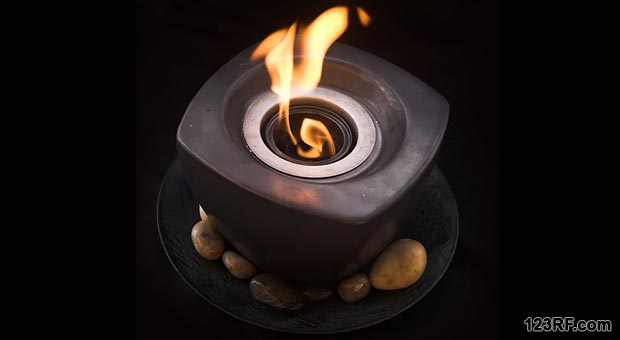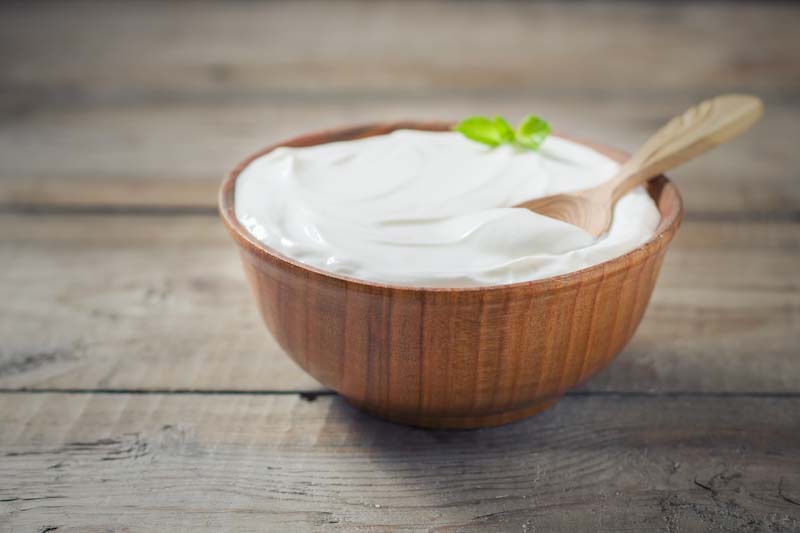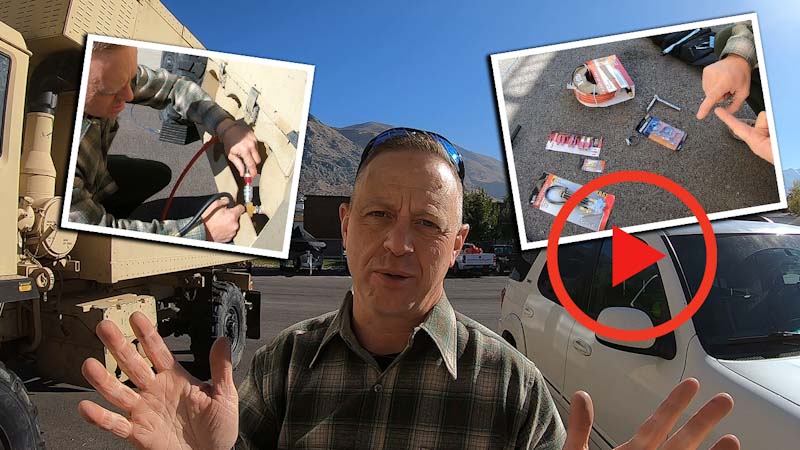Gel fuel is a relative newcomer to the portable fuel scene and is making quite a splash, mainly because if you knock it over, it DOESN’T make a splash. It’s safer to use than regular fuel because it won’t spill out and cause a fuel fire, and it doesn’t produce any noxious gases if burned inside with no ventilation, which makes it an excellent tool for survival.
So let’s see how to make gel fuel at home for your stockpile.
There are a couple of different ways to make gel fuel at home and both are just a matter of preference. Regardless of which way you choose, the primary incendiary component is 90% isopropyl alcohol, aka rubbing alcohol. The other component, the gelling agent, is either soy wax or calcium acetate.
The debate about which is better is basically the same as that over chocolate or vanilla: it’s just a matter of which you prefer.
How to Make Gel Fuel with Soy Wax
- If you choose to use the soy wax, just follow some simply steps:
- Melt 6 ounces of soy wax in a pan.
- Add 1/2 cup 70-99% isopropyl alcohol (higher percentage is better if you can find it) and stir until completely combined.
- Pour the mixture into 6 soup cans or pet food cans until they’re about 3/4 of the way full then add a wick that goes to the bottom of the gel fuel.
- Cool in the fridge for several hours or overnight, and then it’s ready to use.
If you’d rather store in quantity, you can put it in gallon jugs. Just make sure that you label it well so that nobody mistakes it for water or something else and store it away from children and pets.
How to Make Gel Fuel with Calcium Acetate
If you’d like to use calcium acetate, which is actually the more preferred method, you can either buy it or make it yourself.
Making calcium acetate at home: You’ll need crushed chalk (calcium carbonate) and white vinegar (acetic acid). Combine 4 parts vinegar to 1 part chalk and the result will be carbon dioxide, which will evaporate, and calcium acetate and water, both of which will remain. This process smells like rotten eggs, just so you know.
You’ll be left with a solid on the bottom and a liquid on the top. It’s the solid that you want, though you’ll need some of the liquid to make the gel. You’ll need to evaporate 1/2-2/3 of the water out of the solution. You can do it by placing the solution in the oven for a few hours, sitting it in the sun, or carefully evaporating it on “low” on the stove top. You can also strain it using a cheesecloth or coffee filter.
Making the gel fuel: Combine 9 parts isopropyl alcohol and 1 part calcium acetate. Stir together and it will instantly begin to gel. Put it in the empty soup cans as described above. Add some water in if you’re using solid calcium acetate that you bought. The ratio, regardless of whether you’re making your own or adding water to store-bought, is about 1 part water to 3 parts calcium acetate.
The Math Made Easy
We hate translating “parts” to actual measurements so we’re going to put this in cooking language for you. To get the proper ratio of calcium acetate to water, use 3/4 cup calcium acetate and 1/4 cup water.
Now, since it’s only 1 part of this mix to 9 parts isopropyl alcohol. There are 16 cups in a gallon so if you use 1 gallon of isopropyl alcohol, you need to add 1 3/4 cup + 1 teaspoon of the calcium aceate/water mixture to get the right ratio. After that, if the gel is too thick for your liking, just add a bit more isopropyl alcohol until you’re satisfied.
Making it Pretty
Many people like to burn fuel gel in the fireplace or in pretty pots for ambiance. If you’d like to do that, you can jazz up the fuel by making it crackle when it burns, so that it sounds like wood burning. To add this effect, add 2 tablespoons of cooking oil to each gallon of alcohol (1 teaspoon per 12 ounces of fuel gel).
If you’d like to get even fancier and make it smell good, pick up your favorite scented oil from the local craft store and use that in place of part (or all) of the cooking oil.
We’ve talked about the importance of morale in various articles throughout this site, and we stand by that idea. If you’re making gel fuel at home for survival, making it sound homey or smell good won’t make it less functional but it may make you feel good when things look bleak.
Words of Warning
The measurements given here are just a jumping off point. If you want to make a huge batch, just follow the ratios. A word of warning though; just because gel fuels won’t spill like liquid fuels will, make no mistake that they WILL burn you. The fire is hot and it burns for a long time, so if you get the lit gel on you, it’s not going to be pretty.
Take all of the same precautions with it that you would with any other highly flammable liquid. Label it well, store it away from heat and sunlight, and keep it out of the reach of children and pets.
Now you know how to make gel fuel at home for your stockpile. You can store it for practically forever as long as you keep it covered, but you still need to be cautious. We like to seal ours in plastic zip bags to keep the moisture out, but that’s just our preference. If you’ve made gel fuel, tell us about your experience in the comments section below.
This article has been written by Theresa Crouse for Survivopedia.










Dan | April 23, 2014
|
I like the simple explanation. It’s something I’m definetly going to try to make in the next couple of weeks. I want to see how it works with one of the flower pot heater designs.
David | April 23, 2014
|
Dan, great minds think alike … I made the flower pot heater/stove last week and thought this would compliment that project very nicely!
Court | April 23, 2014
|
How long will a soup can that is 3/4 full burn? Is there sufficient heat to cook with a cast iron pan over the flame?
neo | November 19, 2014
|
Yes. I like this and am familiar with the ingredients. I have actually made is in my general chem lab but we used ethanol. I was looking for a replacement for the ethanol but wasn’t sure how well isopropyl would work. My only question is how long would you say a pint o this burn for? Obviously I should just test it myself. I just was not sure if there is someone with prior knowledge. My goal is to make 8-9 hr gels for my greenhouse throughout the night. It’s dropping below freezing here in the mountains so I need a long lasting heat source. I already have a space heater but I am only getting a 20 degree heat increase with it.
gritch | November 19, 2014
|
Isopropyl comes in both 91% and 70% in drugstores, both for little difference in price. Walgreens has it in quart bottles.
I don’t know about isopropyl, but denatured ethanol has more available heat than methanol when burned
kerry | May 4, 2015
|
Find a spot in the green house to set two cans, on above the other and offset the bottom one out a bit. Then punch a hole in the side of the top can about 1/2″ from the bottom. Line it up so that when the top can burns down to the hole, its melted fuel will begin to run out the hole and drip into the lower can. After a bit of dripping, the burning fuel will drip down and start the bottom can going. Of course you would not do this without thinking through how to now burn greenhouse down. Doing it on a set of steps made of concrete blocks comes to mind. Could set up maybe a 4 or 5 tier system to cover a few days of heat …..
grintch | May 5, 2015
|
The step idea is very ingenious and interesting. I’ll have to try it out.
Does the burning alcohol create carbon monoxide gas?
thomas | April 23, 2014
|
Thanks for the Info, Theresa
clarence | April 23, 2014
|
Great idea, keep them coming.
Joseph Hyde | April 23, 2014
|
A website to pass on.
http://shtfschool.com/
Maybe you’re already familiar?
If not… ‘Selco’ lived through the war in Bosnia in the ’90’s and has written a web site/blog about it. Not your typical ‘survivalist’ web site, since he actually survived a year of it! Just something to be aware of especially for the Christian. Selco is not, but it’s the way he experienced it, and I think closer to the ‘truth’ of how it may come down if it does then what others may be thinking about or actually prepared for… Thanks.
John Hammond | April 23, 2014
|
Is the gel corrosive? It seems as though pint and quart paint cans would work well with their tight sealing type lids but I wonder about long term rusting of the can. Perhaps choose only cans designed for water base paint. If you use paint cans, be sure there is absolutely no paint residue remaining. Some paints contain pigments that can give off toxic vapors under high heat. (even though the paint itself is relatively non-toxic)
chemman | May 4, 2014
|
Shouldn’t be corrosive. Either way you make it you won’t have an acid when you are done.
Brian | April 23, 2014
|
I help teach Girl Scouts , we make what’s called a Hobo Stove we get large cans ,like they use at schools w/ veggies poke holes around the can top sides not in the top( this case bottom) with a can opener (the triangular ones we use to use for juice cans) then cut 2 slots in the open end big enough to get a small cat or dog food can into and bend the piece up inside the can. for fuel we used a smsll cat or dog food can w/stripped cardboard the same width as the small can then fill it w/ wax these gell packs sound like they might work as good or better I’m going to make a few and try them out Thanks for the great Idea
Nora Marginean | April 23, 2014
|
Im not familiar with these ingredients. Would you be so kind as to direct me of where to purchase them ?
Theresa | April 25, 2014
|
Hi Nora! Isopropyl alcohol is just regular old household rubbing alcohol. You can find it at any supercenter, drug store, hardware store, or grocery store. Calcium carbonate is the active ingredient in most antacids. If you use them, make sure that they’re at least 1000mg per tab. You can also order it online in powder form. Calcium acetate is just plain old chalkboard chalk. Crush it up or order powdered calcium acetate online at such places as Amazon. Vinegar, which provides the acetic acid is standard household white vinegar. Good luck! 🙂
grintch | August 12, 2014
|
Chalk is calcium CARBONATE, not acetate.The vinegar converts it to acetate.
sally | April 23, 2014
|
A word of caution about milk jugs. They are designed to break down over time. I learnt this the hard way when I had some grains stored in milk jugs in the kitchen. They became brittle and began to crack. Had to pitch the contents out due to dust and weavils. Lesson learnt. I now use glass or metal for most storage.
David | April 23, 2014
|
Dan & John,
I was think of both these things as I read the article … just made the flower pot heater/stove last week and thought this would compliment that project very nicely. I also thought buying new 1/2 pint paint cans from the local craft store would make the perfect re-sealable containers. Great alternative heating for my camp trailer and in a post SHTF world.
David | April 23, 2014
|
I had an additional thought as a cautionary tale: While these gel candles may not emit noxious fumes, the flame will burn oxygen out of the atmosphere, so be sure you have a well ventilated area. Many unaware campers have suffocated from lack of oxygen while trying to heat their camper/trailer with an open flame.(Usually a stove burner)
Theresa | April 25, 2014
|
That’s true. You should always use them in a well-ventilated area. Also, anything that burns is going to emit at least a small amount of hydrocarbons so, since you don’t want to breathe that, ventilate! 🙂
Tim | February 19, 2015
|
I must have missed that one… Where can I find the flowerpot heater/stove DIY artice/directions? It seems everyone else knows about this one… Thanks ;{》☆★☆ ~} ]
Survivopedia | February 19, 2015
|
Tim,
here is the article you are asking about: DIY Candle Heater.
ScooterGirl | December 14, 2016
|
The only fuel source in a post SHTF world will be wood. After all, it’s not like they’ll still be manufacturing, bottling, shipping and selling isopropyl alcohol. Even if you make a ton of it now it’s still not renewable and therefore only a slight extension of the inevitable.
Matt Hutson | March 22, 2019
|
Actually you can make your own fuel source (ethanol) and take a couple shots of it while your at it(moonshine).
Osito | April 23, 2014
|
Can this fuel be stored in an unheated outbuilding? That is, will it stand up to freezing and thawing repeatedly? Good information, thanks!
Theresa | April 25, 2014
|
Hey Osito. The freezing point of isopropyl alcohol is -128.2 degrees F (-89C) so if you’re using 99% IA, you’re probably good to go. The small amount of water that’s in the gel may make a small difference but unless you’re in an extremely cold climate, it should be fine. If you’d like, do a small test batch and pop it in the freezer. If it freezes, evaporate more of the water out and try again, or just store it elsewhere.
Walter Beard | April 23, 2014
|
For years I’ve used a one pound coffee can with a roll of toilet paper without the cardboard roll set sideways in the can soaked in rubbing alcohol as a stove and heater while out hunting.
It’s light weight and can be made ahead of time, and one soaking lasts a couple of days for preparing lunch, and a little warmth while on stand.
jr | May 3, 2014
|
In case someone hasn’t heard of your suggestion, the roll of toilet paper can be turned upside down, and be reused. Might have to add more Alcohol (or Pure Grain Alcohol). Just fill up and stop when it stops soaking it in. Coffee can is a great idea. I was taught with empty (unused) paint cans. The small size of course. Good for outages, heat inside/outside camping, hunting, fishing, etc.
Rick h. | April 24, 2014
|
I am not sure where I could get soy wax but I do have access to bees wax. Would it be an acceptable substitute, and if so, would the ratio be the same? Bees wax should certainly smell better than soy when burned.
Mike r. | April 24, 2014
|
Yes. It will work fine. Just remember, bees wax and parafin put off smoke, so wax will not burn as clean, but it should not be a big problem in small amounts.
Berkeley hotchkiss | April 24, 2014
|
Rick-
did not mean to cast a negative vote, just wanted to see what the complaint was.
I do know that using beeswax for fluxing lead compounds gives off a lot of flammable smoke. I wonder why soy wax?
Theresa | April 25, 2014
|
The reason that soy wax is used is because it’s (sort of) water soluble and is much softer than paraffin. Also, soy is renewable and paraffin is made from fossil fuels. There’s a huge debate about carcinogenics that are released when paraffin is burned, and it also makes more soot than soy. I think from a functional standpoint, soy is used because paraffin won’t mix right with the water or the alcohol, and it releases less soot. Many claim that it reduces no soot, but that’s not true. Anytime something burns, hydrocarbons are released; soy just happens to release less and what it does release is a lighter color. Also, soy melts at 122 degrees F and paraffin melts at 154, so that may make a difference. Soy wax is also much easier to clean up if you spill it or drip it.
Now, onto beeswax. Interesting question. I had to dig a bit because I REALLY like beeswax. It’s renewable and is going to be readily available to me if SHTF because I’m considering starting my own hive. The only problem that I see with using beeswax is the water solubility issue. It has a low melting point (144-147 degrees F) and burns relatively cleanly so the only reason I can see not to use it is that it’s not water soluble.
Looks like soy wax is the way to go for gel.
Also, thanks everybody for the comments – glad you’re enjoying the article. 🙂
Pingback:Emergency Preparedness | imperfectionbloger | April 24, 2014
|
Osito | April 24, 2014
|
I was wondering if this would be suitable for a small heating device, like the Kandle Heeter ( http://www.heatstick.com/_KanHeet01.htm ). Any thoughts?
Pingback:How to Make Gel Fuel at Home for Survival | intelwars2 | April 24, 2014
|
Pingback:Bio Prepper | How to Make Gel Fuel at Home for Survival | April 24, 2014
|
Bob C | April 25, 2014
|
What type / size of wick do you recommend and what size soup can?
Manster | June 27, 2014
|
Hello Bob, any craft supply will sell you a small spool of wick material. If anyone has a different idea what else to use and I’ll be there.
Manster
Lucie | May 4, 2014
|
I don’t know if anyone has suggested this, but I’m going to try making the gel using methyl hydrate. It’s a cleaner burning fuel than rubbing alcohol plus it’s much cheaper to purchase. I can get almost a gallon of methyl hydrate (for shellac) at the BMR in Ontario for approx. $6.95. Home Hardware sells the same hydrate at twice the cost but it’s still cheap. I’ve cooked one-pot meals using a fondue burner and 3 tablespoons of methyl in the burner. It boils water in no time and is perfect to replace the wood used in hobo stoves to cook a meal.
Manster | June 27, 2014
|
Lucie, good post. Fellow Canuck. When using Methyl Hydrate is the ratio the same?
US Gallon 128 ounces , Canadian gallon is 160 ounces.
Could you let me know as I would rather use MH.
Thanks Manster
Manster | June 27, 2014
|
Hey Girl great idea for gel making. What about adding eucalyptus oil or tea tree oil? Toxic fumes? How long can this be stored and better glass or plastic for long term?
We live on a river and would like to get your opinion on using the river to run a generator of some type to charge batteries, etc.
The whole side of our home faces south so solar and wind would be an asset.
Keep up with the great ideas.
Take care Manster
Pingback:How to Make Gel Fuel at Home for Survival – | August 2, 2014
|
Leland Thibodeaux | October 7, 2014
|
I would like to tell people who are stocking up on food supplies my way of saving my food.I rigged up a air conditioner vacuum pump I purchased a cover for both wide mouth and the regular size canning jars, I have about 350 quarts of food saved that way now it has to be dry food it will stay good to eat for 10years or more,I have canned all kind of beans, macaroni,cornmeal, grits rice,powdered milk,sugar flour you name it if it is dried I have it and it very easy to do. I pull a vacuum of about 30# and it only takes about 2 minutes to do. Just lately my wife found a quart of cornmeal that we had made from our own corn, I had processed it over ten years ago and it look and tasted just like it had been made that same day. So I am sure that it would be good for a much longer time than the 10 years.
m | October 24, 2014
|
how about substituting different types of alcohol? such as ethyl (also a rubbing alchohol), vodka, what about a “less pure
” alcohol such as whiskey, or homemade alcohol? If you substitute do you have to change the ratios at all?
grintch | October 24, 2014
|
Yummy gummi bears!
Pingback:Survival Cooking Fuel | Family Survival | October 29, 2014
|
Pingback:How To Make Survival Weapons And Tools | Family Survival | November 2, 2014
|
jose perez | November 19, 2014
|
what would the parts be for the calcium acetate in cups, ie: if I’m making a gal batch using 1 gal of rubbing alcohol.
T | September 14, 2015
|
I had this gel mixture work only one time for me. I can’t figure out what I am doing wrong. This is what I am doing. I got garden lime to use. I mix 1/8c garden lime to 1/2 c vinegar. I let it evap by half or more. I then mix in 2 to 2 1/4 c up 91% alcohol. It gels up pretty good, but after it sets it separates and becomes thin again. Can you give me a clue? Am I using too much alcohol or not enough garden lime???
AC | September 29, 2015
|
A word of CAUTION….BURNING ISOPORPYL ALCOHOL RELEASES POISONOUS VAPORS / FUMES. This must be used only in very well ventilated areas. Wax candles for heating enclosed areas are much safer. The fumes from isopropyl alcohol can be deadly
grintch | September 29, 2015
|
Also the flame is hard to see, particularly on spilled liquid. I’ve been told mixing a little very salty water in the liquid alcohol gives it a more noticeable flame, but haven’t tried it yet.
T | September 29, 2015
|
I had wondered just that, about burning it indoors. Thanks so much.
ScooterGirl | December 14, 2016
|
You’re wrong about that. Burning alcohol only releases water vapor and carbon dioxide. It is only when there is not enough oxygen present for complete combustion that alcohol produces carbon monoxide, formaldehyde, ammonia, benzene, and other toxic chemicals. Burning two or three cans of gelled alcohol, even in a fairly well insulated residence, does not consume enough O2, or release enough CO2, to make much of a difference.
Igor | September 30, 2015
|
Is it a White Vinegar with 5% of acid in it? Or must it be a vinegar essence?
Theresa Crouse | April 26, 2017
|
White vinegar from the store will work just fine.
Juan | October 19, 2015
|
Is there a reason to evaporate the water instead of removing with a syringe which is faster. It gel faster when using calcium acetate.
Since there is no need for refrigeration, will leaving it outside make the gel harder, less affective?
gritch | October 19, 2015
|
Does gel fuel REALLY not produce noxious gases????
Pingback:A Prepper's Guide On How To Make Gel Fuel | Survival Frog Blog | February 1, 2016
|
Pingback:2 Easy Steps To Make Gel Fuel | February 3, 2016
|
akash | April 21, 2016
|
I want make belly for commercial sale purpose at least 50 gallons 7.5 kg each gallon plz do help to know what items I must get equipped to make this amount of gelly
Payton | June 26, 2016
|
Just curious on making canisters for the gel out of soda cans which can then be used in those awesome outdoor gel fuel stovetops, what temp does this gel burn at and what would be some ways to increase or decrease that temp based off from desired usage? Thanks for the awesome article.
AMINAT FUNKE | July 3, 2016
|
please i need real practical on biogel fuel and how much it will cost me to learn it?
sarah1390 | August 9, 2016
|
I have access to 10% vinegar while regular is 5%. I wonder in this case can I get away with a 2 to 1 ratio
Jefferson | August 11, 2016
|
I tried to make it but I must have the amounts wrong, I started with a food grade calcium carbonate and added or made the white vinegar to make the calcium acetate and I let it sit till some of the water evaporated and I could see the white on the bottom, so I waited about two weeks for natural evaporation so then I put 9 tbs of alcohol in a jar and added 1 tbs to the jar of the calcium acetate… the acetate had a milky look to it, and nothing. Still liquid. so what did I do wrong?
Clkeck | September 29, 2016
|
I made the soy gel last night and it was enough to fill 3/4 of a soup can. It took about 30-60 minutes for it so set into a semi sold state. I was so excited when I lit it in my gel fireplace and it gave off great heat and beautiful yellow flames that even crackled like a real fire. I have about 15lbs of soy wax on hand left over from a candle craze I was in lol It’s relatively cheap and figured this can came to about .30, as opposed to the $3 a can of realflame gel fuel. Oh, and no wick is needed! I do have a question though, I noticed after about 20 minutes, I could hear the wax start to boil and I immediately snuffed it out. Is the boiling a problem? I’m far from a scientist and new to the diy world. One more question, actually a few more lol I also have calcium carbonate on hand. I can only find 91% isopropyl around here. Isn’t the remaining 9% of it water? So should I let even more water evaporate? Will either of these formulas work with denatured alcohol? I don’t know anything about the denatured alcohol but could only find 50%ethanol/50%methanol blend and this makes me nervous. I will be using this indoors as an added heat source. Any help/info/advice appreciated!
ezuogu ifeoma | October 3, 2016
|
Thanks a lot Theresa, I will try this, so awesome if I succeed. But how do I get soy wax locally. Better still, what are the components of soya wax
Aleck harris | March 5, 2018
|
Theresa you need to take a chemistry course. The solid left on the bottom after disolVing the calcium carbonate in the vinegar is the unreacted calcium carbonate the calcium acetate is iN the supernatant,the liquid part. That is why as you state that you Need some of the liquid to make the gel. Also chalk is calcium carbonate not calcium acetate
crazysquirrel | January 31, 2021
|
I was wondering if you could use some kind of OIL instead of alcohol?
Canola, peanut, olive, etc.
If you can, this might make for a nice camping heater!